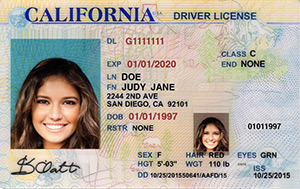
Specifically, you can expect to receive the following in your vehicle VIN history report: The information that you will receive will cover everything from how many owners the car has had in the past, to what accidents is has been in, and even what the odometer readings are. If you order a VIN number check, you will receive a plethora of up-to-date information regarding the vehicle in question. What info is in a California VIN history report? You can then expect to receive the VIN report in the mail within a couple of weeks.
#BACK FEE CALIFORNIA DMV LOOKUP REGISTRATION#
To lookup a VIN number, you must fill out the Request for Vehicle Registration Record (also referred to as the INF1125 form), pay the applicable fee and mail the application package to the DMV headquarters address that is located on the form.
#BACK FEE CALIFORNIA DMV LOOKUP HOW TO#
You may only fill out the Vehicle Record Request form when learning how to check VIN number information if you are the owner of the vehicle, and if you are a certified user. This method can be beneficial if you do not have access to the internet, and would rather fill out a physical form to submit. However, you can receive an official VIN history report that provides important information without placing a request online. Looking up VIN numbers can also be done through the mail, although it takes a longer amount of time than using an online method. When this happens, you have to re-register/title your vehicle again.Checking VIN Numbers by Mail in California This usually happens after 5-7 years of inactivity. One thing to note, some cars will fall off the DMV database due to inactivity, sadly, however, that includes vehicles in non-op status.

Park it on your driveway or inside your garage – otherwise, the PNO becomes invalidated and you’ll have to pay your registration fees.


A stored vehicle is not required to have auto liability insurance.

If you miss your window to pay the PNO fee you may end up paying hundreds in penalties and be stuck with paying another year’s registration for a vehicle you’re not using. If you don’t plan to drive your car, or if you plan to store your vehicle during the next DMV registration renewal year, you may apply for the non operational status (PNO).


 0 kommentar(er)
0 kommentar(er)
